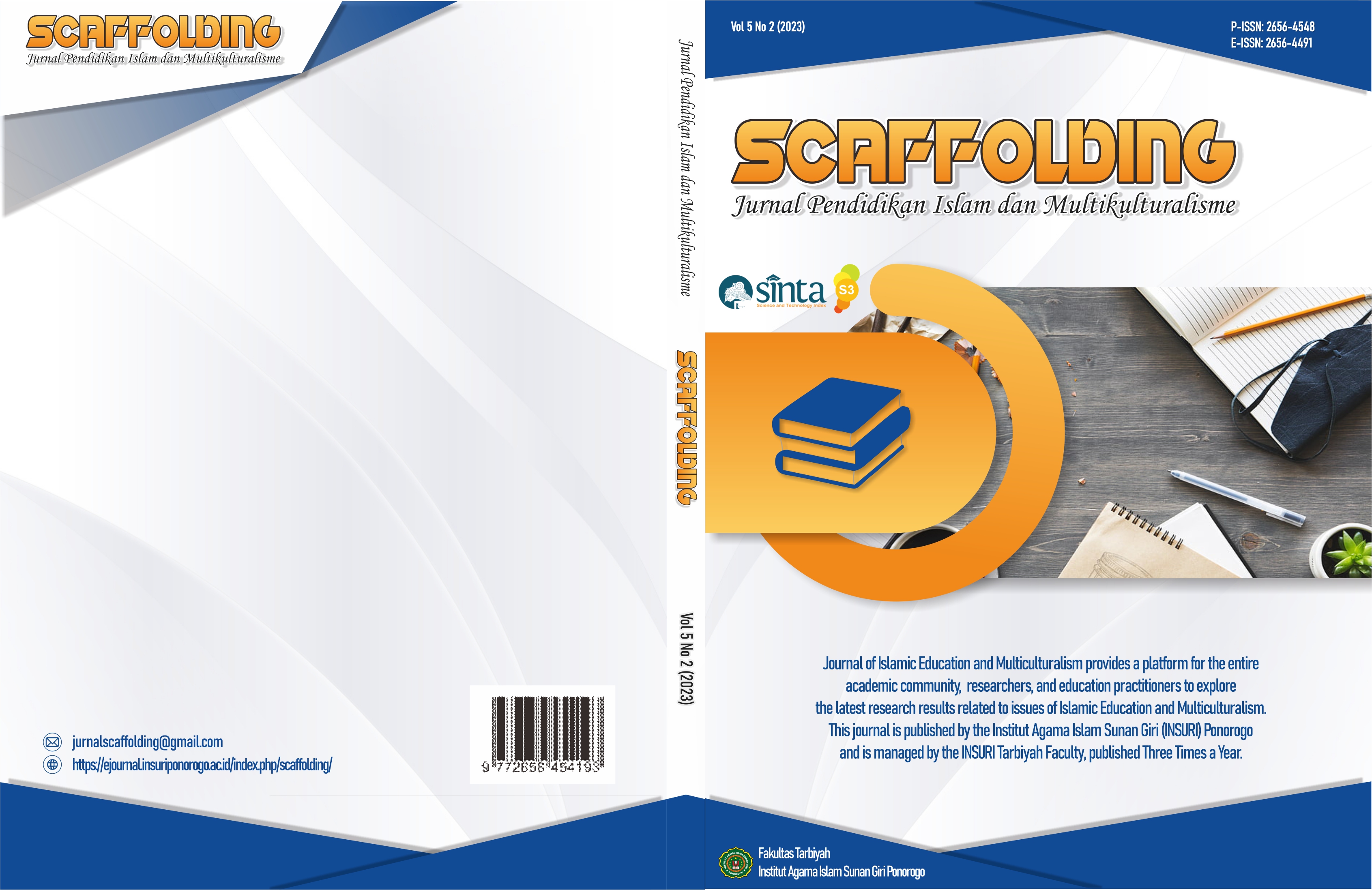The Implementation of the Humanistic Learning Model in the Learning of Islamic Religious Education in Junior High School
DOI:
https://doi.org/10.37680/scaffolding.v5i2.3136Keywords:
Humanism, Islamic Religious Education, SMP Islam Walisongo KembaranAbstract
The objective of this study is to analyze the patterns of application of the humanistic learning model, specifically within the context of teaching Islamic Religious Education (PAI). The research was conducted at Walisongo Kembaran Islamic Junior High School and falls under the category of field research. In this research, the data encompasses the application of the humanism learning model in the context of Islamic Religious Education (PAI) at Walisongo Kembaran Islamic Junior High School. The sources of data for this study originate from both the teachers and students associated with Walisongo Kembaran Islamic Junior High School. The data collection technique employed in this research involves observation, interviews, and documentation. Meanwhile, the data analysis technique utilizes a descriptive-qualitative approach through three steps: data reduction, data presentation, and drawing conclusions. As a result, the implementation of the humanistic learning model in Islamic Religious Education (PAI) at Walisongo Kembaran Islamic Junior High School, using methods such as lectures, question and answer sessions, problem-solving, and discussions, has been aligned with and produced values in educational humanism. These values include the creation of an enjoyable learning atmosphere, the principle of developing students' potential, the principle of respecting opinions, fostering creativity, establishing connections with real-life situations, and acknowledging the freedom to make efforts. The learning model is based on the principles of fulfilling the desire to learn, meaningful learning, learning without punishment, and learning and change.
Downloads
Published
Issue
Section
License
Authors who publish with this journal agree to the following terms:
Authors retain copyright and grant the journal right of first publication with the work simultaneously licensed under a Creative Commons Attribution-NonCommercial 4.0 International License that allows others to share the work with an acknowledgement of the work's authorship and initial publication in this journal.
Authors are able to enter into separate, additional contractual arrangements for the non-exclusive distribution of the journal's published version of the work (e.g., post it to an institutional repository or publish it in a book), with an acknowledgement of its initial publication in this journal.
Authors are permitted and encouraged to post their work online (e.g., in institutional repositories or on their website) prior to and during the submission process, as it can lead to productive exchanges, as well as earlier and greater citation of published work.



